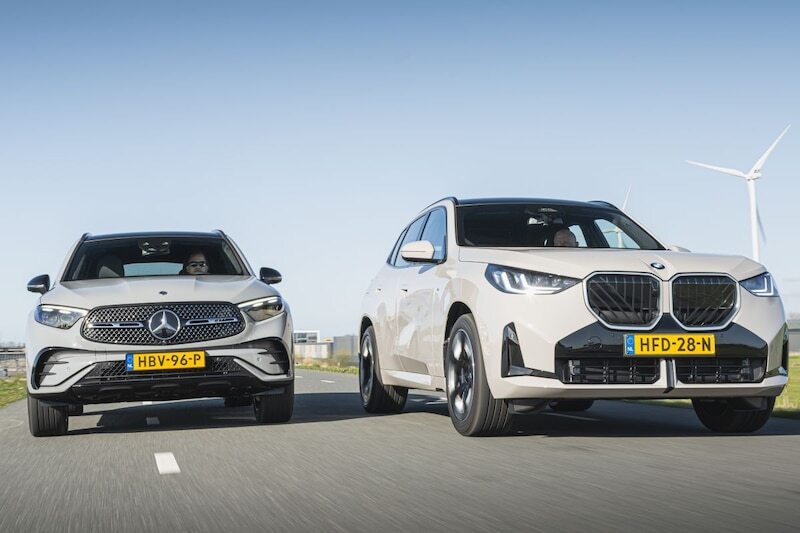
The X3 in this test is a 30e xDrive M Sport with a power output of 299 hp, listed at €71,467. Mercedes-Benz counters with a GLC 300e 4Matic Sport Edition. This plug-in hybrid delivers 313 hp and costs €77,355.

Huh, no electric X3, what about the iX3?
Don’t get us wrong: there will be an electric BMW iX3 in the future. However, the iX3 was until now ‘just’ an electric X3 – and surprisingly successful due to the good execution of that concept – while the new one is a completely separate model from a completely new generation. The new X3 will therefore not appear as an EV, but it is available again as a plug-in hybrid. This is more than ever the choice for Dutch buyers, who pay thousands of euros less for the 299 hp plug-in hybrid than for the much less powerful entry-level petrol version due to bpm (Dutch tax). In plain English, that’s called a ‘no-brainer’.
100 kilometers is almost the norm these days
Plug-in hybrids used to be able to drive about 50 kilometers electrically, but nowadays 100 kilometers is almost the norm. In that context, the X3 remains relatively modest, but with a maximum of 90 kilometers on electricity, it goes much further than its predecessor. Even so, the GLC immediately scores the first points, because it goes as far as 130 kilometers due to an even larger battery. At least, on paper. On asphalt, you should rather count on 100 kilometers for the GLC and 80 for the X3, but that is still usually enough for the daily kilometers to work – or along the branches of your own company, of course. After all, we are talking about chic and expensive SUVs, cars that handsomely exceed the level of the average lease car.

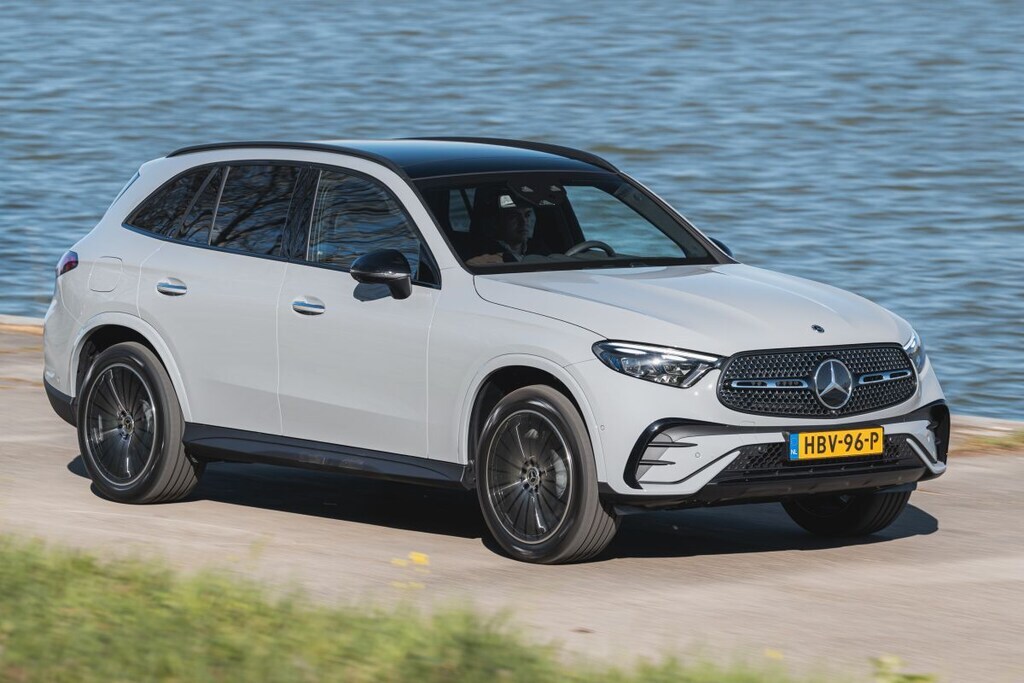
Four PHEVs in the Mercedes GLC-class
The fact that we call the GLC ‘plug-in king’ in the intro is not only due to that large battery. Mercedes offers no fewer than four different plug-in hybrids of this model, including a diesel and a ridiculously powerful AMG 63. We choose the least powerful and most common version of the bunch, but the GLC 300e with 313 hp is still more powerful than the 299 hp BMW. However, it compensates for that with a lower weight and has more power on electricity than the GLC, so that under those circumstances it is easier to merge with the BMW than with the Mercedes.
BMW somewhat grumpy at low speeds
In hybrid mode, both cars work according to the same principle, where a longitudinally placed four-cylinder can mechanically drive four wheels and is assisted by an electric motor placed between the engine and gearbox. So no ‘electric’ four-wheel drive, but integral drive under all circumstances. Both powertrains are nicely refined, although we sometimes catch the BMW behaving somewhat grumpy at low speeds and the Mercedes lacks some enthusiasm. As mentioned, the car has plenty of power, but you have to press the accelerator firmly to notice something. Strangely enough, this also applies to the brake, which, due to its spongy and distant operation, inspires a little less confidence than the more directly responding BMW pedal. Note: we are talking about feeling, because if necessary, the Mercedes stops about as quickly.
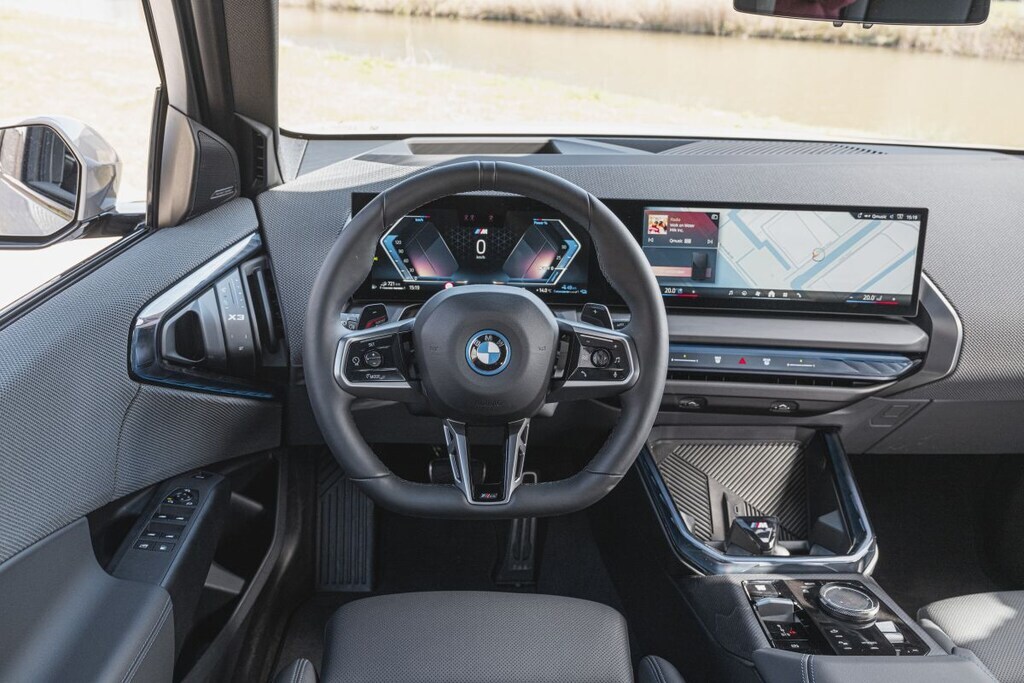
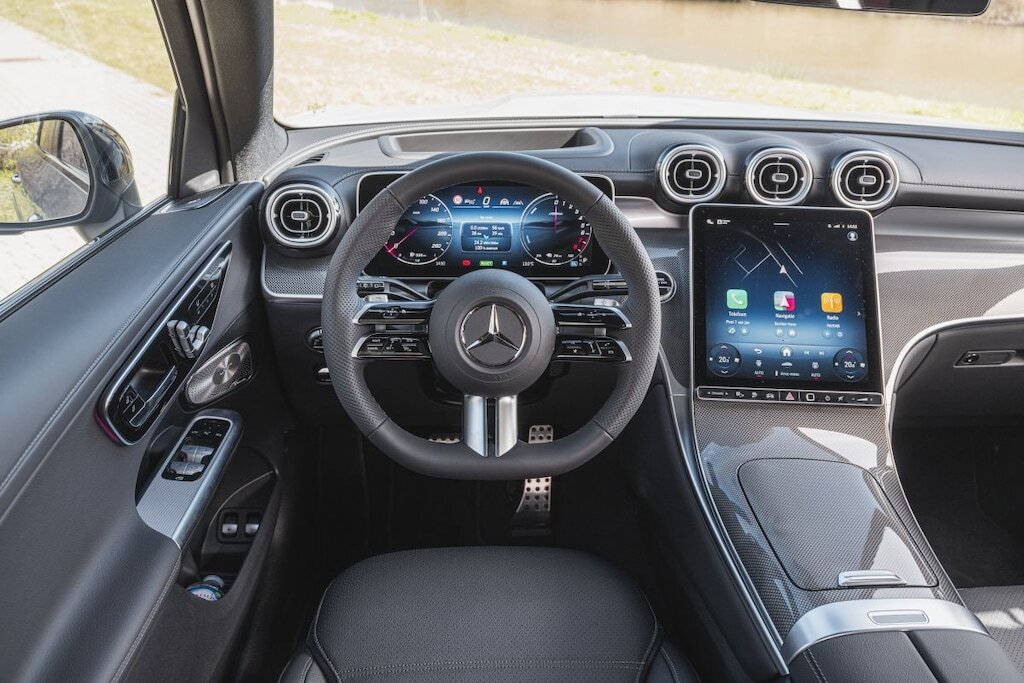
X3 more dynamic than the GLC
The X3 feels more dynamic and light-footed on the road than the GLC, exactly as the prejudices about these brands dictate. The BMW does that without significantly sacrificing comfort. ‘Our’ X3 is also an M Sport with a sports suspension. That is a bit firmer, but still comfortable enough. Also in this segment, the vast majority goes for such a sports package, which is carried under the AMG flag at Mercedes.
Air suspension is optionally available on the GLC and we mention that anyway, although our test car does not have it. This option raises the comfort to an even higher level and that would fit perfectly with the Mercedes SUV, which excels in comfort but is slightly shortchanged in that area by the chassis with steel springs. That is certainly refined enough, but simply has some difficulty with the high weight of this car. The steering of the Mercedes is somewhat more distant than that of the BMW, but the GLC can be placed precisely and feels as distinguished as you would expect from a large, expensive Mercedes.
BMW X3 comes across as less special
The BMW X3 is just a bit less and comes across as less special from behind the wheel in one way or another, but that may also have to do with the interior. By the way, we don’t necessarily mean this negatively, because the GLC interior with all its round shapes, finishing edges and shiny panels is very tasteful. However, it also feels special, although the use of materials is less beautiful here and there than expected. It is a typical Mercedes interior anno now, including a sea of mood lighting and a vertical touchscreen in which a graphically beautiful, but also very colorful infotainment environment is hidden. It’s not all relaxing, but the system is well put together and is very extensive. However, we are somewhat disappointed in the navigation, which is bad at finding places using keywords. This makes the temptation to go for Android Auto or Apple CarPlay great, but that is actually a shame in such a car.


Buttons
The steering wheel is covered with touch-sensitive ‘buttons’ in piano lacquer and although that is not our preference, it generally works quite well. However, we miss a ‘next’ button to go to the next song or another channel, a striking miss. At BMW, the number of buttons is kept to a minimum anyway, but what is left is used in a smart way. The rotary knob for the infotainment system is still there and remains fine, although you notice from everything that BMW’s latest infotainment environment has been developed for touchscreen use. The old ‘lists’ have long given way to fields full of tiles, and that just doesn’t work as well with such a scroll wheel. However, having the option is nice and the infotainment itself is too, although we find the menu structure of the Mercedes just a little easier to understand.
The BMW interior is much tighter and more minimalist than that of the Mercedes, and that says a lot about both. With the X3, BMW goes even further in this area than with other models, making the dashboard now an almost empty ‘surface’. In our case, that surface is covered with fabric, but that is not standard. The build quality is excellent and because some beautiful details have been added here and there, the whole still looks high-quality. A small dissonance is unfortunately the large, open compartment between the seats, which looks rough and unfinished.
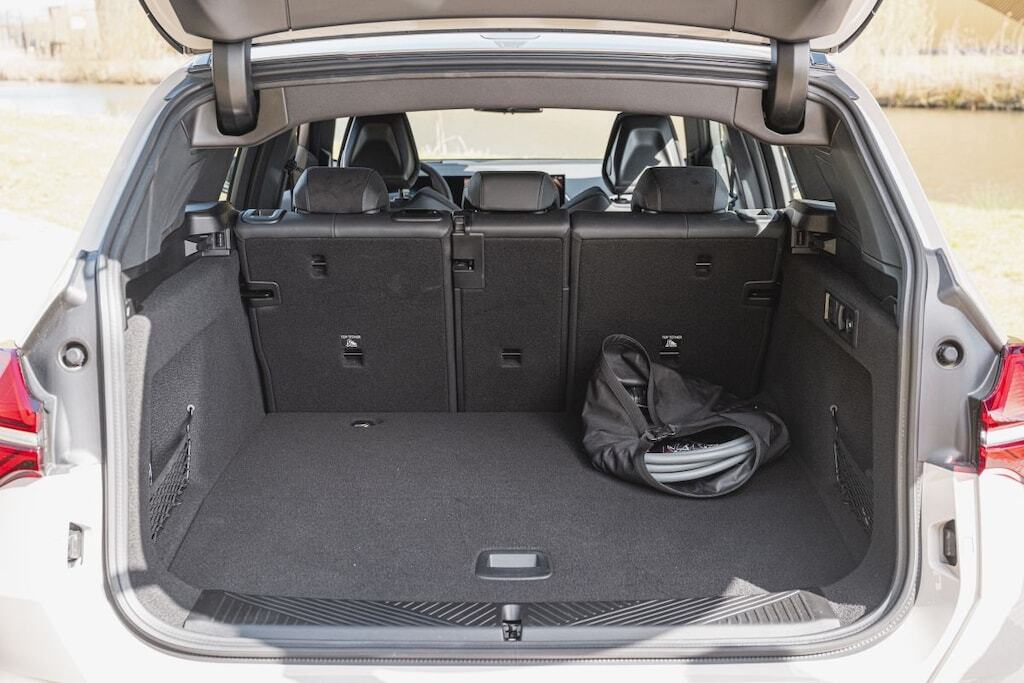
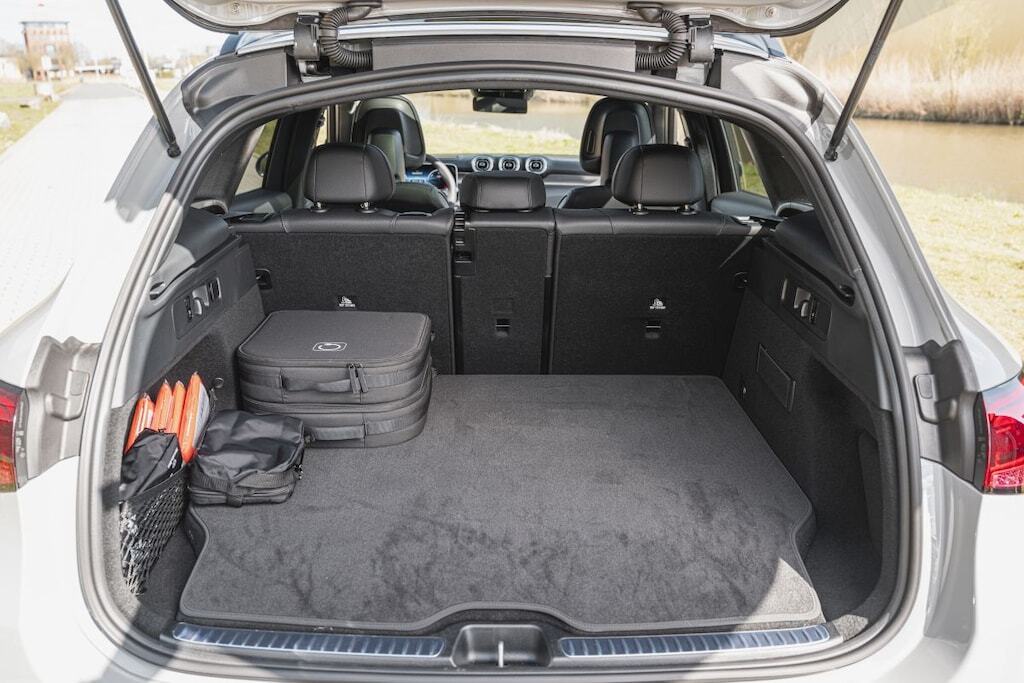
Four-wheel drive, fast, economical and partly electric, what can’t they do?
The plug-in hybrid technology makes these cars real all-rounders. They have four-wheel drive, are fast and very economical and can even often be driven electrically. All that with a luxurious and spacious SUV, although there is a caveat to that ‘spacious’. You can’t just hide over 20 kWh of battery, so these cars are both a lot less spacious than a traditionally powered variant. At Mercedes, the loading space shrinks from 620 to 470 liters, at BMW from 570 to 460. At BMW, the loss is entirely under the floor, which is still virtually flat due to a subtle increase. At Mercedes, that is very different, and the battery provides a significantly raised loading floor. Both cars have a rear seat that can be folded down in three parts, but only at the Mercedes can that be done from the loading space.
On that bench itself, both the BMW and the Mercedes are good places to be and we find no major differences apart from decoration and design. The fact that no place has been devised in these cars to store the charging cable is a weakness. Now there is always a set of awkward and space-consuming bags slinging through the luggage compartment of your expensive SUV, and these cars are certainly expensive. At BMW it is still somewhat manageable and you step into a plug-in hybrid X3 for €67,973, which, as mentioned, is also immediately the cheapest X3 in the Netherlands. A version with the M-dressing desired by many will cost you at least 71.5 mille and if you want it like the generously executed test car, you have to pay just under €84,000 at BMW. Mercedes makes it a lot more colorful. A GLC 300e costs you at least €75,780 and that is simply solid in this segment. The surcharge for AMG frills is still manageable, but our test car costs a hefty €91,240, €7,300 more than the BMW, and is dressed in a similar way.